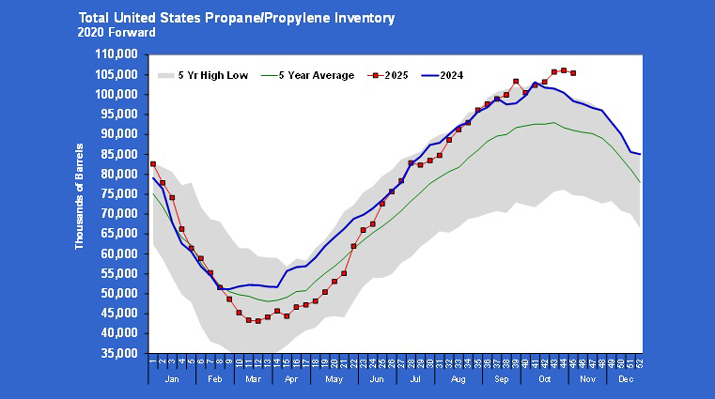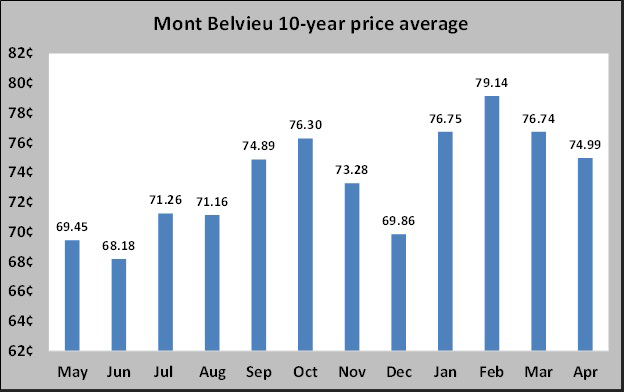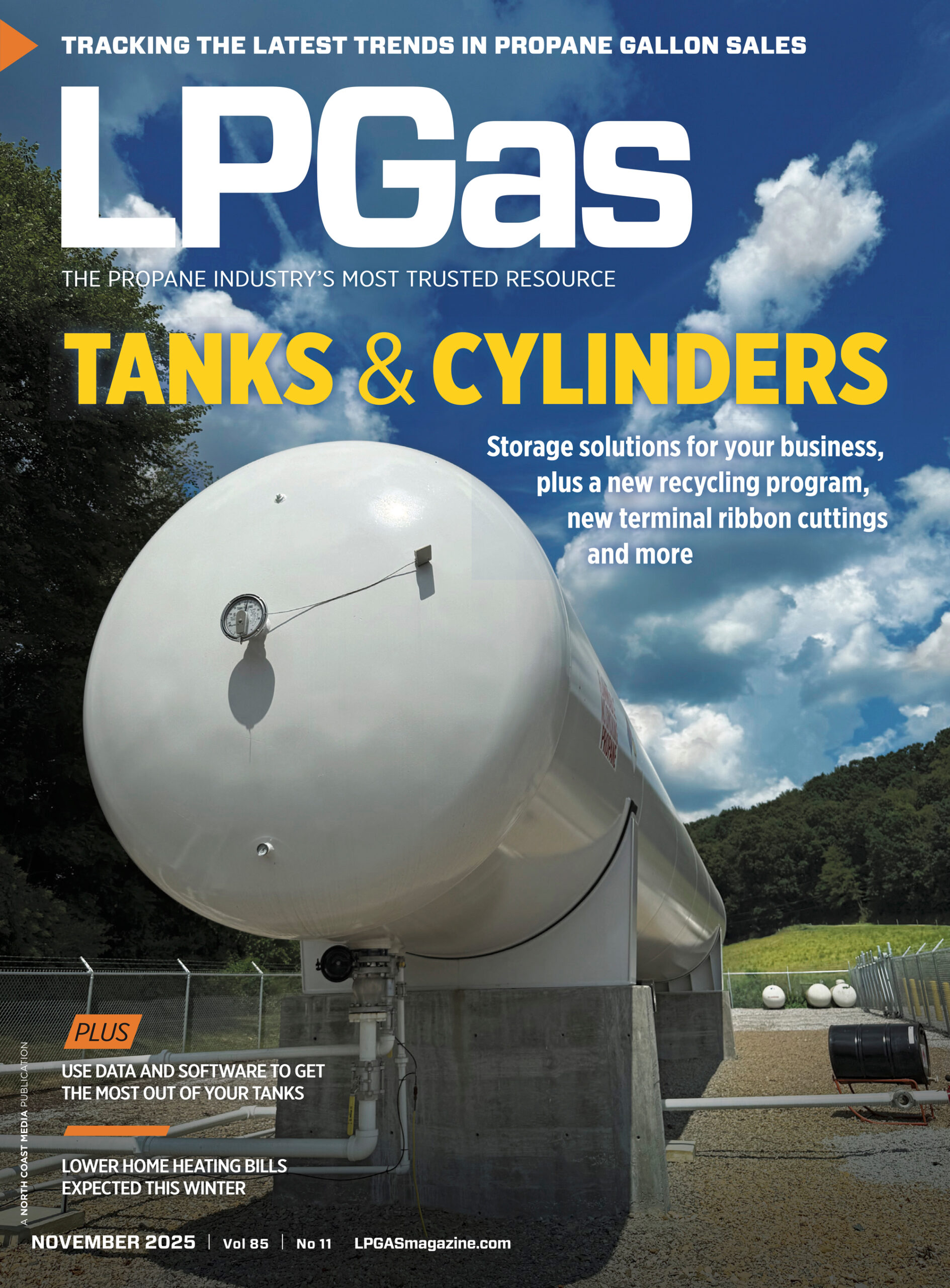Canadian prime minister’s energy agenda could benefit oil, gas, propane
Since taking office, Prime Minister Mark Carney has embarked on a bold, surprising transformation of Canada’s energy landscape.

Carney is a former central banker and climate-conscious financial leader. His transition into political leadership has come with expectations – some of which he’s embraced and others he’s upended. Most notably, his government’s sweeping changes to oil and gas policy have disrupted the status quo, and this could benefit the propane industry in ways few anticipated.
Carney’s rise to power came at a time when Canadians were increasingly divided over the role of fossil fuels in the national economy. While environmentalists demanded more aggressive moves toward decarbonization, a significant portion of the country – especially in resource-rich provinces – called for a more pragmatic, jobs-focused approach. Carney’s platform appeared to offer a blend of both, but early in his term, it became clear that economic pragmatism, industrial renewal and geopolitical resilience would define his energy strategy.
Perhaps the single most impactful move for the propane industry came in the form of a tax rollback few had predicted from a climate-aware leader like Carney. On April 1, 2025, the Carney government eliminated the federal consumer carbon price – also known as the fuel charge – on fuels like gasoline, diesel, natural gas and, crucially, propane. This wasn’t a minor tweak to Canada’s complex carbon pricing system; it was a decisive policy reversal. For propane consumers – rural homeowners, farmers, small manufacturers and logistics firms – the removal of this line item from their bills translated to immediate financial relief.
While critics labeled the rollback as a betrayal of climate commitments, Carney framed it differently: “We are not abandoning our climate goals. We are recalibrating our tools to support Canadian families and businesses through a difficult economic moment.”
His messaging emphasized affordability, competitiveness and national unity – sentiments that resonated far beyond Parliament Hill.
To further embed this policy change, Carney’s government introduced legislation to permanently repeal the sections of the Greenhouse Gas Pollution Pricing Act that had previously authorized the consumer carbon price. For the propane industry, this was more than symbolic. It signaled a stable policy environment for years to come, reassuring investors, distributors and downstream users that propane would remain cost-effective and unburdened by volatile carbon surcharges.
While the carbon price rollback captured headlines, it was only one piece of Carney’s broader strategy to support the oil and gas sector. His government also launched a new Major Projects Office – a centralized body tasked with fast-tracking approvals for large infrastructure projects. One of the first initiatives reviewed under this office was LNG Canada Phase 2, a project poised to double Canada’s liquefied natural gas (LNG) export capacity from Kitimat, British Columbia. Although propane is not LNG, the expansion of natural gas infrastructure has significant implications for propane as a byproduct of gas processing. More natural gas production means more natural gas liquids (NGLs), including propane, available for domestic use and export.
Another early priority was the Pathways Plus carbon capture and storage (CCUS) initiative, focused on reducing emissions from oil sands production. While this project centers on bitumen, the underlying message was clear: Carney’s government is willing to support fossil fuel development – so long as it aligns with emissions-reduction strategies. This approach departs from ideologically rigid policy and instead embraces a technology-forward path. For the propane sector, this offers hope that its relatively clean-burning profile, compared to other hydrocarbons, may afford it a longer runway in Canada’s energy transition.
Carney has also shown a keen understanding of the vulnerabilities in Canada’s energy and trade systems. In response to U.S. protectionist measures and tariff threats, his government created a Strategic Response Fund, allocating $5 billion to help Canadian firms, including those in the energy sector, adapt and compete. This fund, along with an expanded Large Enterprise Tariff Loan Facility, provides liquidity and investment security for propane producers and distributors facing supply chain or trade disruptions.
In tandem with these financial buffers, Carney introduced a “Buy Canadian” procurement policy, directing government departments and crown corporations to prefer domestic suppliers when local alternatives exist. While the policy doesn’t explicitly single out energy, it creates a favorable environment for Canadian propane infrastructure and manufacturing – particularly in areas like tank production, storage equipment and transport systems.
Another major legislative move was the One Canadian Economy Act (Bill C-5), which aimed to remove interprovincial trade barriers and streamline labor mobility. For the propane industry, this means fewer bureaucratic hurdles when transporting fuel across provincial borders or hiring skilled workers for operations. It’s a practical, if not flashy, policy that serves the day-to-day functioning of an industry deeply embedded in regional economies.
Not every move from Carney’s government has tilted in favor of fossil fuels, however. His administration has maintained the framework for an oil and gas emissions cap, although it has emphasized flexibility, technology development and industry partnership over punitive enforcement. Instead of forcing production cuts, Carney wants the industry to innovate – whether through methane leak reductions, improved efficiency or carbon capture. For propane, this nuanced approach is encouraging; the fuel’s cleaner emissions profile positions it as a viable bridge fuel in a carbon-constrained future.
That said, Carney has also reaffirmed support for alternative energy sources. His government allocated $370 million to boost biofuel production, including renewable diesel and biodiesel. While these fuels don’t directly compete with propane in most applications, their expansion signals a broader shift toward fuel diversification that could reshape market dynamics over time.
Still, perhaps the most surprising aspect of Carney’s energy agenda is the sense of balance he has achieved – at least for now. His administration has introduced measures to speed up environmental reviews under a revised Impact Assessment Act, clarified a “one project, one review” policy (especially when provinces have already conducted rigorous evaluations) and signaled an intent to eliminate duplication in federal and provincial processes. These reforms are welcomed by the propane sector, where even small infrastructure projects – storage tanks, rail terminals, barge-loading facilities – often get entangled in regulatory red tape.
In a political landscape often characterized by sharp divides – oil vs. environment, east vs. west, urban vs. rural – Carney’s approach is notably integrative. He seems determined to support the energy sector not in spite of his climate credentials, but because of them.
“We cannot lead the world if we are economically insecure at home,” he said during a recent stop in Calgary. “We need to build. We need to compete. And yes, we need to lead on climate – but from a position of strength.”
For the propane industry, these words and actions matter. After years of marginalization in policy discussions – often lumped in with higher-emitting fuels despite its efficiency and versatility – propane is enjoying renewed attention. Lower taxes, streamlined regulations and indirect boosts from LNG infrastructure all create fertile ground for growth.
Yet, challenges certainly do remain. The global energy system is shifting. Electrification, hydrogen and renewables are advancing quickly. Since the propane industry wants to remain relevant in this evolving landscape, its leaders must continue to advocate for its unique role – particularly in rural, remote and off-grid contexts where electrification remains expensive or impractical.
In Carney’s first year, one thing is clear: Under his leadership, Canada’s energy future will be different than most have expected.
Gordon Feller is a Global Fellow: The Smithsonian Institution; a White House appointee of a federal commission advising the U.S. secretary of energy; and an adviser to U.S.-based companies.
Featured homepage image: tttuna/E+/Getty Images
















